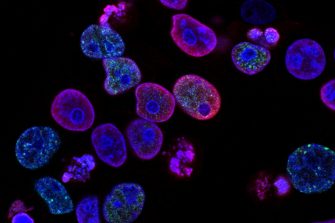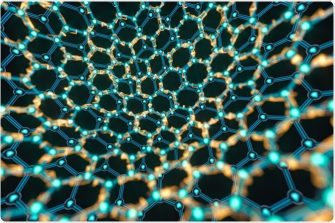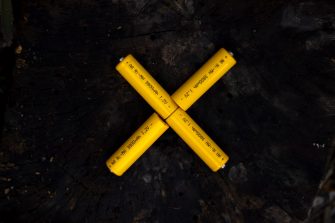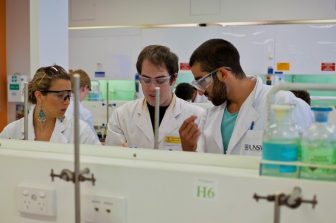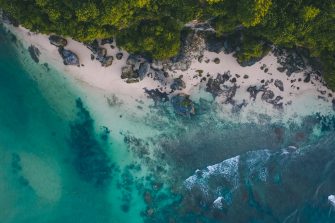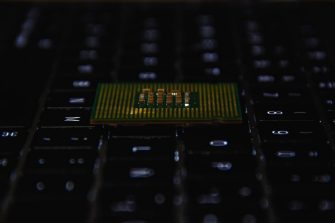SciX@UNSW
Registrations are now open.

Don’t just learn science.
Do science.
Access world-leading researchers and facilities at UNSW Science.
The SciX@UNSW Program is designed to support passionate high school students who are eager to delve into scientific research. In this on-campus program, students will join a UNSW research group and conduct an independent research project, ideal for HSC Extension Science, International Baccalaureate (IB) independent projects, or to find out what a career in research science is like. Each project is overseen by a member of the academic research staff. The projects are taught by UNSW graduate research students who will act as student mentors throughout their project. They will introduce you to cutting-edge research tools and methodologies and guide you as you extend your scientific skills.
The highlight and key component of the SciX@UNSW Program is a one-week intensive Summer School, held at the end of January. Held on campus at UNSW Sydney, students will be supported to develop individual hypotheses, conduct data collection, and build their analysis. All this before the summer holidays are over.
SciX@UNSW Summer School: 19 January - 23 January 2026
SciX@UNSW is unable to offer accommodation as part of the 2026 Program. Students must make their own arrangements, we apologise for any inconvenience caused.
SciX@UNSW Summer School 2026
The highlight and key component of the SciX@UNSW Program is a one-week intensive Summer School, held at the end of January at UNSW Sydney. You'll be supported to develop individual hypotheses, conduct data collection, and build your own analysis. All this before the summer holidays are over.
Key dates:
- Monday, 27 October at 7am: SciX applications open. Click through to our registration page. Remember, projects are allocated on a first-come, first-served basis, so get in quick!
- November: Students will be allocated their projects.
- November: Research groups are formed via Microsoft Teams. Meet your mentors and get started on the background learning and skills training with project-specific pre-work.
- Early December: Join a virtual group session via Zoom with a one-hour project Q&A opportunity.
- Monday, 19 January – Friday, 23 January: SciX Summer School 2026.
- Late February: Check in with your mentors to get advice on analysis or troubleshooting via another virtual session.
- Early May: Final Q&A session with mentors - by this stage, you’ll be an expert too! You’ll be amazed how far you’ve come with the SciX@UNSW Program.
Choose your project
SciX@UNSW student projects are diverse and cover all areas of science. Choose a project that will assist you with your Science Extension project, or choose a topic based on your own passions and interests.
-
During the SciX Summer School week (January), you'll be involved in hands-on research lab and workshop sessions. You'll learn new science and techniques in data creation, collection and analysis. We'll support you in developing and investigating your own hypothesis and research question. Each research project will run with a small group of SciX students with one or more research mentors. The research mentors are UNSW Science PhD students who have spent several years working on this area of scientific research. Each research project is also overseen by one of our senior academics.
-
During the SciX Summer School week (January), you'll be involved in hands-on research lab and workshop sessions. You'll learn new science and techniques in data creation, collection and analysis. We'll support you in developing and investigating your own hypothesis and research question. Each research project will run with a small group of SciX students with one or more research mentors. The research mentors are UNSW Science PhD students who have spent several years working on this area of scientific research. Each research project is also overseen by one of our senior academics.
-
All research projects have been developed by UNSW scientific researchers to ensure they are interesting, suitable and technically feasible for senior high school students.
-
Our research project mentors have been trained to deliver the program by UNSW staff and high school teachers. During the Summer School week, mentors will carefully go through all the scientific and technical knowledge you'll need to complete your project. We aim for a ratio of six students for each mentor, so you’ll have plenty of support.
-
When you choose a project, you will join a group of like-minded students interested in a similar topic. Your group can support each other as you work through your individual lines of enquiry. Students will participate in group forums, facilitated by their project mentor, to encourage discussions and problem-solving. We also have regular activities to connect students from across the program to network and learn from each other.
SciX mentors
The SciX mentors are practicing researchers at UNSW, mostly PhD candidates, chosen specifically for their enthusiasm towards sharing their love of science with others. Previous SciX students have expressed that research time with their mentor was the most valued component of their SciX experience.
During ten research lab sessions during the Summer School, your SciX mentor(s) will:
provide you with access to and training in a specific research technique to use for your scientific research project.
support you in accessing, understanding and citing relevant peer-reviewed scientific literature
help you to develop a research question and hypothesis that can be explored based on the project’s research technique
answer your questions about the research methodology and the rationale for the approach
support you in developing your research plan
provide suggestions and some training in how to analyse, present and discuss the data you obtain with your research technique
support you in considering future improvements in your methodology
support you in understanding the sources of systematic and random errors in your experiment, and understanding the reliability, accuracy, validity and limitations of your methodology
You may also ask your mentor for guidance and advice on:
general research skills such as conducting a good literature review and producing high quality figures
publicly available data sources relevant to your project
preparing a Science Research Portfolio
preparing a Science Research Report

